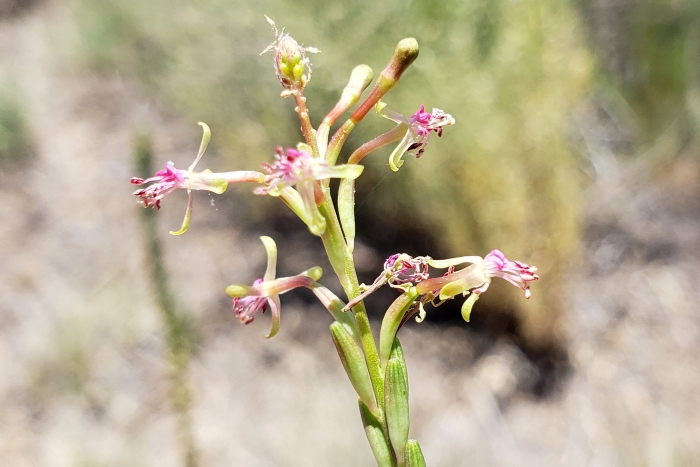Velvetweed
(Oenothera curtiflora)
Velvetweed (Oenothera curtiflora)
/
/

Petrified ForestNPS
CC BY 2.0
Image By:
Petrified ForestNPS
Recorded By:
Copyright:
CC BY 2.0
Copyright Notice:
Photo by: Petrified ForestNPS | License Type: CC BY 2.0 | License URL: https://creativecommons.org/licenses/by-sa/2.0/ | Uploader: PetrifiedForestNPS | Publisher: Flickr |




















































Estimated Native Range
Summary
Oenothera curtiflora, commonly known as Velvetweed, is an annual herb that thrives in open areas such as plains, grasslands, and along streams throughout the Western United States, as well as Mexico. It can grow to a height of 0.2–2 meters, and occasionally up to 3 meters in optimal conditions. The plant typically has an unbranched stem or branches only below the flower spikes. Its lance-shaped leaves, measuring 2–20 cm in length, are distinctive for their soft, velvety hairs. Velvetweed produces flower spikes that are 20–30 cm long, adorned with green buds that bloom into small, 5 mm diameter flowers with four pink petals. These flowers are nocturnal or crepuscular, opening at night or before dawn, which is a unique adaptation for pollination by night-flying insects.
Velvetweed is valued for its drought tolerance and ability to thrive in disturbed soils, making it a suitable choice for xeriscaping and naturalistic plantings. It is also used for erosion control due to its rapid growth and extensive root system. In gardens, it requires full sun to part shade and can tolerate a range of water conditions, from low to medium, as long as the soil provides good drainage. While it is not commonly found in nurseries, it can be grown from seed and is sometimes used in wildflower mixes for its delicate flowers and foliage texture.CC BY-SA 4.0
Velvetweed is valued for its drought tolerance and ability to thrive in disturbed soils, making it a suitable choice for xeriscaping and naturalistic plantings. It is also used for erosion control due to its rapid growth and extensive root system. In gardens, it requires full sun to part shade and can tolerate a range of water conditions, from low to medium, as long as the soil provides good drainage. While it is not commonly found in nurseries, it can be grown from seed and is sometimes used in wildflower mixes for its delicate flowers and foliage texture.CC BY-SA 4.0
Plant Description
- Plant Type: Herb
- Height: 1.5-6 feet
- Width: 1.5-3 feet
- Growth Rate: Moderate
- Flower Color: White, Pink
- Flowering Season: Summer, Fall
- Leaf Retention:
Growth Requirements
- Sun: Full Sun, Part Shade
- Water: Low, Medium
- Drainage: Medium, Fast
Common Uses
Bee Garden, Bird Garden, Butterfly Garden, Drought Tolerant, Hummingbird Garden, Low Maintenance, Rabbit Resistant
Natural Habitat
sandy, saline environments such as beaches, salt marshes, and mangroves
Other Names
Common Names: Velvety Gaura, Downy Gaura, Smallflower Gaura, Willow-Gaura, Lizardtail, Small-Flower Gaura, Velvetleaf Gaura, Velvety Gaura
Scientific Names: , Gaura parviflora, Oenothera curtiflora, Gaura mollis, Gaura parviflora var. lachnocarpa, Gaura parviflora f. glabra, Gaura australis, Gaura parviflora var. typica, Gaura micrantha, Schizocarya micrantha,
GBIF Accepted Name: Oenothera curtiflora W.L.Wagner & Hoch